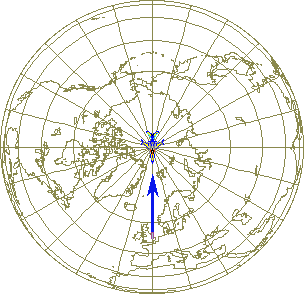
The American Meteorological Society defines the Coriolis effect as “an apparent force, relative to the earth’s surface, that causes deflection of moving objects to the right in the Northern Hemisphere and to the left in the Southern Hemisphere due to the earth’s rotation.”
Every couple of weeks, students in Dr. Hanrahan’s Atmospheric Dynamics class present important concepts to their peers during Content Reviews. For one Content Review, Jonathan Hutchinson and Alex DaSilva took the group out to the Weather Deck to help the class better understand the Coriolis effect.
In this Coriolis effect demonstration, Alex is at the center of rotation and Jonathan is throwing a ball toward him. When they rotate counterclockwise (cyclonically) as viewed from above, like in the Northern Hemisphere, the ball appears to be deflected to the right. When they rotate clockwise (anticyclonically) as viewed from above, like in the Southern Hemisphere, the ball appears to be deflected to the left.
This is an important concept for atmospheric sciences students in order for them to understand and predict atmospheric motion. For example, the Coriolis effect is what causes storm systems like hurricanes and nor’easters to spin counterclockwise in the Northern Hemisphere.
